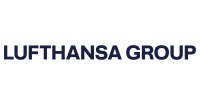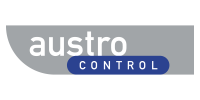RNP APCH RWY 29 Vienna
Timeline

Description
Performance Based Navigation (PBN) in high density Terminal Manoeuvring Areas (TMAs) improves the precision of approach and departure trajectories and facilitates air traffic management whilst also reducing the environmental impact of air traffic, as well as its operational cost. PBN in high density TMAs covers the development and implementation of fuel efficient and/or environmentally friendly procedures for arrival and departure: Required Navigation Performance 1 Standard Instrument Departures (RNP 1 SIDs), Standard Arrival Routes (STARs) and transitions (to final approach) as well as various approaches (RNP APCH, such as LNAV/VNAV, LNAV (Lateral-/Vertical Navigation), and LPV (Localizer Performance with Vertical Guidance) (Space Based Augmentation System (SBAS) European Geostationary Navigation Overlay (EGNOS)) procedures).
To funnel departure traffic at noise-critical altitudes onto tight departure corridors with turns to avoid sensitive areas, the use of RF (Radius to Fix) legs in the initial segment of SIDs is planned for all runways at LOWW and is expected to contribute greatly to a relief in the environmental exposure of neighbouring communities, whilst at the same time reducing track miles, fuel-burn and hence CO2 emissions on the aircraft operators’ side. In the same context the implementation of an RNP to ILS approach, including RF legs in the intermediate segment, is planned. Furthermore, an analysis of the effects on aircraft fuel consumption will be conducted for the procedures within the scope of this project in order to assess targeted benefits. Airspace user feedback and environmental benefits have proved to be so positive that RF Legs have become a major element in the overall PBN strategy of Austro Control. Moreover, equipage rates for RF capability are very advanced which makes their application in the departure domain a very useful, additional implementation element.
The project also includes a MTT (Multi Track Turns) study which will analyse the feasibility to provide RF-leg substitutes by a sequence of TF (track-to-fix) legs (a potential method has already been described by the Federal Aviation Administration (FAA) in the form of the 60-60-40-10 TF leg sequence to emulate RF). This aims at making RF-based procedures more accessible to aircraft that are not RF capable. This would greatly increase the community of airspace users to which these modern, efficient and environmentally-friendly procedures could be made available. Furthermore, the project foresees the implementation of one SBAS LPV200 approach as well as the redesign & publication of the current LNAV/VNAV Approach (both for Runway 29) according to the new ICAO (International Civil Aviation Organisation) DOC 8168 (Amendment 6) criteria which provides the opportunity of lower approach minima. There is the need to coordinate/synchronise efforts (operational procedure and aircraft capabilities) between ANSPs (Air Navigation Service Providers) and Airspace users to ensure the return of investment and/or the start of operational benefits, which is why stakeholders' workshops with airlines and other airspace users are foreseen. The project is building on the 2014-CEF call 007AF1 Performance Based Navigation (PBN) implementation in Vienna.
Additional Information
- Project Type: Air Navigation Service Provider
- CEF Call Year: 2016
- Civil/Military: Civil
- Multistakeholder: Yes
- Main AF: AF1 - Extended Arrival Management and Performance Based Navigation in high density Terminal Manoeuvring Area
- Sub AF: S-AF 1.2 - Enhanced Terminal Airspace using RNP-Based Operations
- Progress Percentage: 100%
